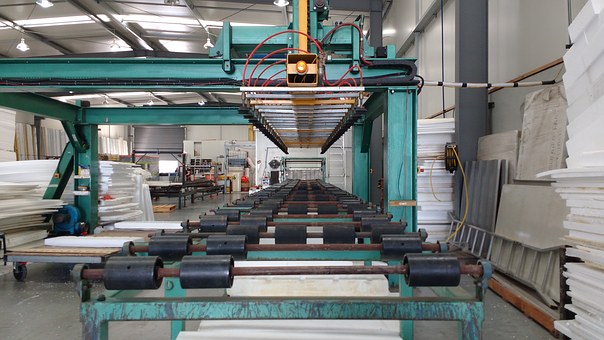Meeting customers’ expectations and delivery requirements has to be priority for every manufacturing company in the world.
The good news is that these expectations are simple: produce products accurately and deliver them on time, every time. However, the companies that struggle to meet other key deadlines in the manufacturing process/supply chain, find this easier said than done.
It’s more often than not a sign of poor materials handling or low production efficiency.
Why is it important?
Just imagine the impact of a material shortage to your production process, the delays this causes to the end product and to the manufacturing schedule, the extra labour costs involved in waiting time, the costs of amending the production line, the extra shipping costs and not forgetting the impending floods of customer complaints.
The importance of this, is if it starts to become ‘the norm”. All manufacturers will, at some point, experience a problem. It could be an un-forecasted sharp rise in demand or a raw material shortage or maybe unforeseen adverse weather conditions.
Whatever the reason, we must expect the unexpected when it comes to on-time delivery (OTD).
We cannot just simply accept poor on-time delivery as ‘routine’ and be OK about it. This can lead to irreparable customer relationship damage – and what is a business without customers?
Relationships, brand reputation and trust are paramount in a strong sales future, for profit and for growth and without proper measurable indicators this can be a damaging ongoing issue if it goes unnoticed.
How do we measure On-Time Delivery (OTD)?
Below are 3 measurement stats of OTD to be considered in your tracking:
- Calendar Days vs Working Days – One of the common misunderstandings between customer and supplier. Does 5 days actually include weekends or holidays?Either way is acceptable but it important that you are aligned with each other alongside your ordering system (ERP);
- Promise date vs Required date – A promise date is the date the supplier committed to meet. The required date is the date needed by the customer. The promise date is best practice and its not really fair to judge a supplier on a delivery that they haven’t agreed to;
- Per cent of line item vs Per cent of quantity ordered – A line item is a single item in a purchase order that specifies a product. In order for an order to be deemed completed, each line item must be closed. The percent of quantity ordered is calculated in parts per million (PPM) and is generally considered filled when 99% of the requested order is received by the customer;

How do we improve On-Time Delivery?
Below, we take a look at 5 ways of improving OTD but we first must set a target – ideally 100% weekly on-time deliveries;
- Maintain accurate inventory records – Ensure your purchasing and receiving processes are robust and flawless. Perform cycle counts on key product lines to ensure they are in-house before a production order is released to the manufacturing floor. An inventory accuracy KPI could be introduced;
- Create and maintain realistic production schedules – know your capacities and load the factory floor accordingly. Communicate with the Sales team to balance the workload to run the plant efficiently. Capacity and line utilisation KPIs would be good to avoid chaos and bottlenecks;
- Monitor Efficiency – Introducing a KPI for efficiency means you will allow everyone in the process to trust the schedules in place and the promised delivery dates to give a more streamlined plant;
- Build strong relationships with suppliers – Develop a scoring system for your suppliers so that you can have regular reviews on performance. Elements such as pricing, quality specification adherence, response time, lead times etc.;
- Celebrate your success – Publicly reward your employees for maintaining 100% on-time deliveries to your customers. This could be financial or something like a trophy or vouchers;
Hobut’s target for on-time delivery is set at 90% and with continued investment in production facilities as well as the recent purchase of a new storage facility will only help to achieve and surpass this target.
Other articles you may be interested in are Smart Factories are transforming manufacturing, How Technology And Digitalisation Are Transforming UK Manufacturing
#ontimedelivery
#theimportanceofontimedelivery
#ukmanufacturing
#manufacturing
#leanmanufacturing
#smartmanufacturing
#britishmanufacturing

